#antenna for lora module
Explore tagged Tumblr posts
Text
#iot lora antenna australia#iot lora antenna active#antenna for lora module#best antenna for lora#iot lora antenna kit#lora antenna range#antenna lora 868 mhz#865 mhz lora module#433mhz lora antenna#manufacturer of Iot Lora antenna#IoT Lora antenna wholesaler
0 notes
Text

Manufacturers of LoRa IOT Barrel Antenna in India 2023
A barrel antenna, also known as a "can" or "cylinder" antenna, is a type of antenna that has a cylindrical shape resembling a barrel. This design offers specific benefits for certain applications, particularly in terms of directionality and gain.
The barrel antenna design can provide some directivity and gain due to its shape. It can be particularly useful when you want to focus the radio frequency (RF) energy in a specific direction, or when you want to achieve a higher signal strength in a particular area. However, it's important to note that the gain and performance of an antenna depend on various factors including the frequency it's designed for, the materials used, and the surrounding environment.
#IoT Lora antenna 868#lora antenna 433mhz#lora module antenna#iot lora antenna amplifier#iot lora antenna australia#iot lora antenna active#antenna for lora module#best antenna for lora#iot lora antenna kit#lora antenna range#antenna lora 868 mhz#865 mhz lora module#433mhz lora antenna
0 notes
Text
Transferência de Arquivos via LoRa
Um projeto que venho fazendo há alguns meses e que muitas pessoas estavam interessadas em transmitir imagens e agora será possível, mas claro, respeitando as limitações.
Transferência da arquivos via LoRa é possível assim como qualquer outra modulação, mas existem desafios particulares nessa tarefa que em outras modulações podem ser mais f��ceis. Sobre a modulação LoRa Antes mesmo de partimos para a transferência de arquivos via LoRa, é preciso entender que o LoRa não foi feito para esse tipo de aplicação e sim para dispositivos IoT, mesmo embora tenha uma taxa…

View On WordPress
#arduino lora antenna#biblioteca lora arduino#esp32 lora arduino#esp32 lora arduino library#lora and arduino#lora arduino#lora arduino adafruit#lora arduino board#lora arduino example#lora arduino library#lora arduino projects#lora transmitter and receiver arduino#module lora arduino#multiple lora arduino#rfm9x lora arduino
0 notes
Text
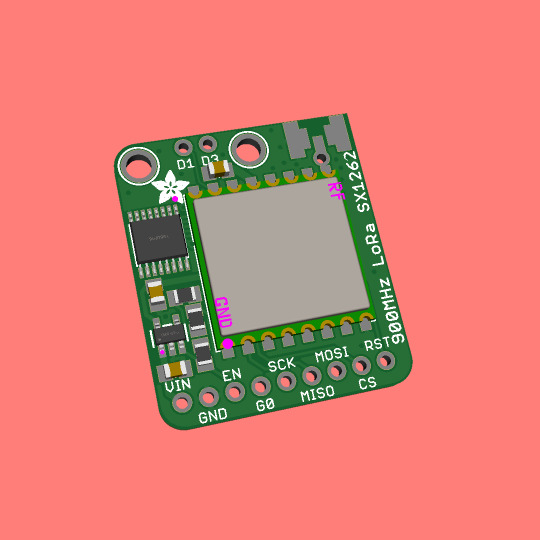
The SX1262 is an updated LoRa chip, so we made a breakout 📡🔧🔄
We got a hot tip to check out the Semtech SX1262 (https://www.digikey.com/short/504bpwww) - compared to our classic SX127x series of "RadioFruit" boards (https://www.adafruit.com/product/3072) the '1262 has lower power usage and longer range as well as some more options for spread-spectrum and extra modulation protocols. Most folks will probably use it for LoRa / LoRaWAN. The pinout is slightly different, so a few changes were made to the classic PCB. We also had some extra room, so we tossed in mounting holes. With this design, you can use wire, uFL, or SMA antennas - just solder whichever connector you desire. Note that the new chips are not software-compatible, so some driver tweaks will be needed to make it work. Coming soon.
#adafruit#lora#semtech#sx1262#longrange#lowpower#wirelesscommunication#radiotechnology#pcbdesign#antennadesign#iotdevices
8 notes
·
View notes
Text
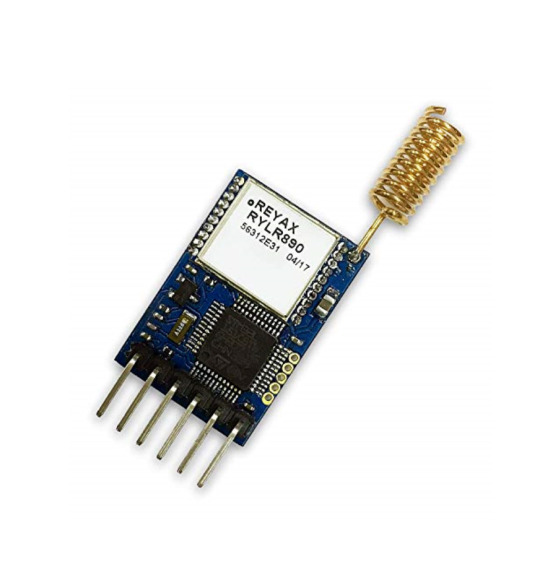
LoRa communication Module
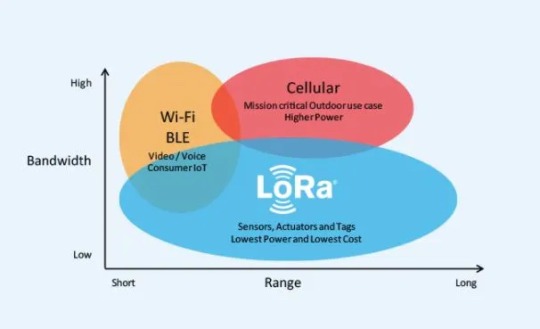
youtube
:
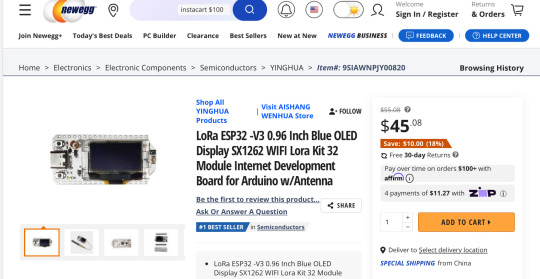
. https://www.newegg.com/p/2A3-00UG-000J9
youtube
.
.
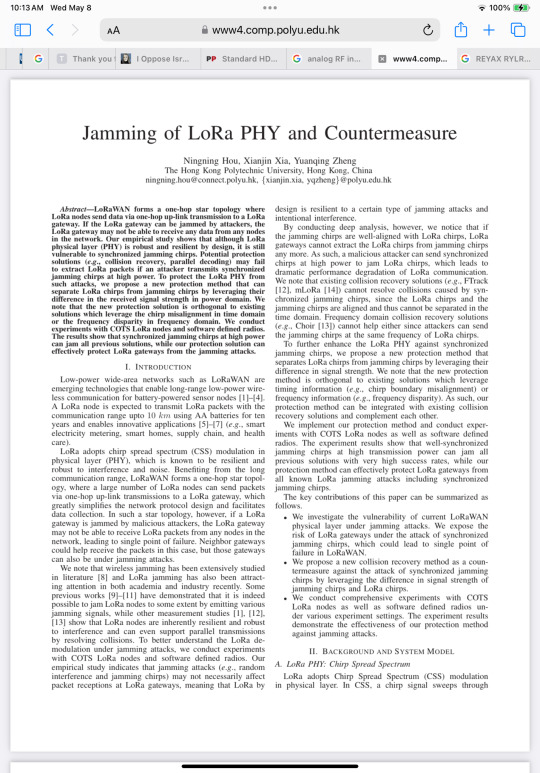
. https://www4.comp.polyu.edu.hk/~csyqzheng/papers/LoRaJamming-INFOCOM21.pdf
2 notes
·
View notes
Text

The GPS PCB Active Patch Antenna is specifically engineered for L1 band applications at 1575.42 MHz. It incorporates a high-performance ceramic patch mounted on a PCB, complete with an integrated low-noise amplifier (LNA) to enhance signal strength. The antenna is supplied with a 1.13mm cable (10cm) and a UFL connector, facilitating seamless integration into compact GPS devices. Its dimensions are 15×15×4mm.
#rf antenna#rf antenna manufacture#telecom#rf antenna india#eteily technology manufactures#manufacturing
0 notes
Text
MiniF27:500mw LoRa Wireless transceiver module
MiniF27 wireless module is designed using Semtech's LoRa chip, featuring a high-precision crystal oscillator, ultra-low receiving and sleep currents, and a sensitivity of -148dBm. It can wake up the microcontroller periodically while maintaining low power consumption. The module's antenna switch is internally

controlled by the chip, reducing the resource demand on the external MCU. Despite its ultra-compact size (same as the LoRa1262), the MiniF27 delivers an output power of up to 27dBm (500mW). Its high integration, small size, and high power make the MiniF27 highly advantageous in IoT and battery-powered applications. MiniF27 strictly uses lead-free technology for production and testing, and meets RoHS and Reach standards.
Frequency Range:433/470/868/915 MHz
(customizable150-960 MHz
Sensitivity:-148dBm @LoRa SX1262
256 bytes FiFo
Maximum output power:29 dBm(800mW)
LoRa, (G)FSK modulation
Data transfer rate: 0.6-300 Kbps @FSK
For details, please click:https://www.nicerf.com/products/ Or click:https://nicerf.en.alibaba.com/productlist.html?spm=a2700.shop_index.88.4.1fec2b006JKUsd For consultation, please contact NiceRF (Email: [email protected]).
1 note
·
View note
Text
📡 Flexible Nb-IoT/LORA Antenna – 90% OFF! Wireless Data Transmission Module!
Enhance your wireless projects with the Flexible Nb-IoT/LORA Antenna. This SMA Male module is perfect for data transmission and works seamlessly with UAV systems and other wireless applications. Designed for long-range communication, this antenna supports Nb-IoT and LORA networks for reliable connectivity. Whether you're working on IoT devices, drones, or other wireless systems, this antenna provides the performance you need.
🛒 Price Now: USD 0.99 (Original price: USD 10.07, 90% OFF!) 🔗 Click & Buy Now: Shop Here!
Take your wireless communication projects to the next level with this high-performance antenna!
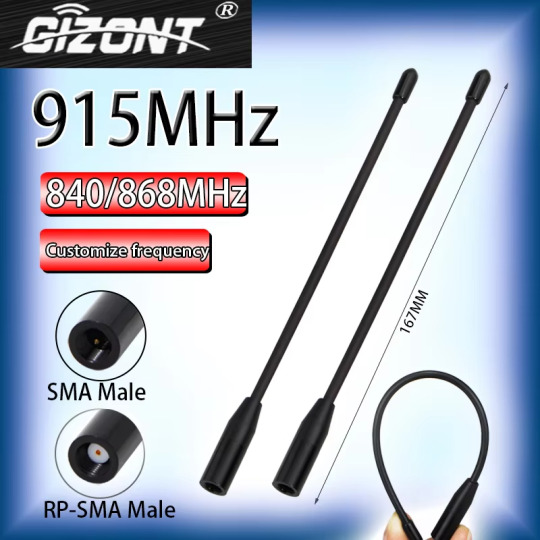
#WirelessModule#NbIoT#LORA#UAVModule#DataTransmission#Antenna#SMAConnector#WirelessCommunication#TechParts#IoTDevices#DroneParts#LongRangeAntenna#AntennaSale#TechDeals#ElectronicsAccessories#AliExpressDeals#DiscountShopping#WirelessTech#AntennaTech#IoTComponents#TechProjects
0 notes
Text
What is the difference between the LoRaWAN wireless module and LoRa gateway wireless transmission technology?
Many individuals find it challenging to differentiate between the LoRaWAN wireless module and LoRa gateway wireless transmission technology, as well as their applications within the realm of IoT.

LoRaWAN specifically pertains to the networking protocol found within the MAC (Media Access Control) layer. In contrast, LoRa serves as a protocol within the physical layer. Although current LoRaWAN networking implementations utilize LoRa as the physical layer, it's worth noting that the LoRaWAN protocol also allows for the use of GFSK (Gaussian Frequency-Shift Keying) as the physical layer in specific frequency bands. From a network layering perspective, LoRaWAN can adopt various physical layer protocols, just as LoRa can serve as the physical layer for other networking technologies.
LoRa, as a technology, falls under the category of LPWAN (Low-Power Wide-Area Network) communication technologies. It represents an ultra-long-distance wireless transmission method based on spread spectrum technology, pioneered and promoted by Semtech in the United States. This approach revolutionizes the previous trade-off between transmission distance and power consumption, offering users a straightforward system capable of achieving extended range, prolonged battery life, and increased capacity. Consequently, it expands the capabilities of sensor networks. Currently, LoRa predominantly operates within free frequency bands globally, including 433/868/915MHz, among others.
On the other hand, LoRaWAN wireless communication stands as an open standard defining the communication protocol for LPWAN technology based on LoRa chips. LoRaWAN defines the Media Access Control (MAC) layer at the data link level and is overseen by the LoRa Alliance. It's crucial to distinguish between LoRa and LoRaWAN because companies like Link Labs utilize a proprietary MAC layer in conjunction with LoRa chips to create more advanced hybrid designs, such as Link Labs' Symphony Link.
LoRaWAN typically employs a star or star-to-star topology, which is generally considered superior to mesh networks due to advantages such as conserving battery power and extending communication range. In a star topology, messages are relayed to a central server through gateways, and each end node can transmit data to multiple gateways. These gateways then forward the data to the web server, where tasks like redundancy detection, security checks, and message scheduling are executed.
In summary, LoRa encompasses solely the link layer protocol, making it suitable for point-to-point (P2P) communication between nodes. In contrast, LoRaWAN includes the network layer, allowing data to be sent to any base station connected to a cloud platform. By connecting the appropriate antenna to its socket, the LoRaWAN module can operate at different frequencies, offering versatility in its applications.
0 notes
Text
LIERDA OCB ANTENNA MODULE
LSD4BT-K55 Module
K55 BLE mesh Standard Module (PCB Antenna)
K55 series of low-power Bluetooth module is a high-performance Bluetooth module which is developed based on the Telink low-power Bluetooth SoC TLSR8250 chip. The module adopts the stamp- type and side plug-in interfaces, is exquisite and compact, is fully lead out via ports and convenient to use, and helps the users omit the complicated RF hardware design, development and production links. Therefore, the users can easily realize the development of Bluetooth application programs on that basis, shorten the R&D cycle, and seize the market opportunities. This model is a pure hardware module that excludes any software. If you need the edition with software, please notify in advance.
Key Benefits
Parameter
·Working Frequency Band
-Working frequency band: 2402-2480MHz
·Ultra-low Power Consumption
-Support 1.8V-3.6V powersupply
-Emission current: ≤20mA (10dBm power
configuration)
-Receiving current: ≤6.5mA (overall current)
-Sleep current: 400nA (SRAM notsaving)
·High-link Budget
-Sensitivity-96dBm±1dBm (1Mbps, PER<30.8%)
-Emission power: Max.10dBm
·Memory Resources
-Internal 512kB Flash (the capacity that
the client can actually use is less than
512kB)
-48kB on-chip SRAM, wherein 32kB can sleep and save
·Compatibility
-Designed interface mode with side
plug-in and stamp holes compatible
·Mesh Functions
-Support BLE
-Support the Bluetooth SIG Mesh
-Support the exclusive Mesh of Telink·Communication Interface
-5 PWM / 16 GPIO / 1 UART(Pin
multiplexing)
Application
PC, Tablet, Mobile Phone, Handheld, and Other Low-Power Peripheral Devices
Smart Household Appliances
Smart City
For more information please visit: https://en.lierda.com/
Hope to be your valued supplier from China. CONTACT: AMINA ZHU E MAIL: [email protected] WhatsApp: 008615061516896 https://en.lierda.com/
youtube
IoTembedded #microcontrollers #sensors #wirelesscommunication #IoTgateways #IoTcloudplatforms #embeddedmicro-controltechnology #RFhardwareR&D #5Gcommunicationsolution #NB-loT #LoRa #Wi-Fi #Wi-SUN #BLE #IOTsystem #semiconductordistribution #cloudpipe-endsolutions #Cat.1 #Wi-SUN #ZigBee #AIrecognition #IoTbasicservice
#IoT
#InternetofThings
0 notes
Text
#IoT Lora antenna 868#lora antenna 433mhz#lora module antenna#iot lora antenna amplifier#iot lora antenna australia#iot lora antenna active#antenna for lora module#best antenna for lora#iot lora antenna kit#lora antenna range#antenna lora 868 mhz
0 notes
Text
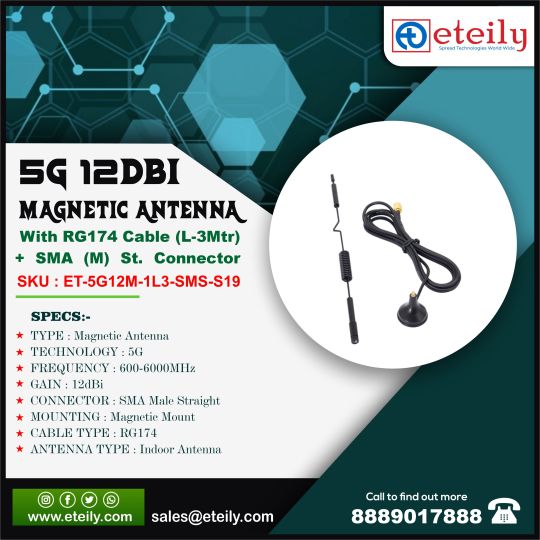
5G 12dBi Magnetic Antenna with RG174 Cable
A 5G 12dBi magnetic antenna is a type of antenna designed to enhance the performance of 5G wireless communication devices, such as routers, hotspots, or modems. Let's break down the key features:
5G: 5G is the fifth generation of wireless technology, which offers faster data speeds, lower latency, and greater capacity compared to previous generations (4G, 3G, etc.). The antenna is specifically designed to work with 5G networks and devices.
12dBi Gain: The "12dBi" figure refers to the antenna's gain, which is a measure of how much the antenna can increase the power of the signal it receives or transmits. A higher gain indicates better signal reception and transmission capabilities. In this case, a 12dBi gain suggests that this antenna can significantly boost the signal strength.
Magnetic Antenna: The term "Magnetic Antenna" indicates that the antenna can be attached to metal surfaces using a magnetic base. This feature provides flexibility in terms of placement and allows for easy positioning on metallic surfaces, like the roof of a car or a metal housing for a 5G device.
Magnetic antennas are often used in mobile applications or in scenarios where temporary or flexible mounting is required. This type of antenna is convenient because it can be easily installed and removed, making it suitable for mobile installations or where drilling holes or more permanent mounting solutions are not practical.
#rf antenna#RF Antennas#RF Antenna at Best Price in India#RF antenna system#radio frequency antenna#Best RF Solution Provider#RF Antenna Suppliers#Manufacturer of RF Antenna#rf antenna manufacturers in india#RF Antenna Manufacturer#RF Antenna Exporters#RF Antenna Latest Price#Wireless HF Antenna#RF Antenna Companies in India#Wholesaler of RF Antenna#RF Antenna Amplifier#RF Antenna Module#2.45 GHz Antenna Module#High Performance RF#Antennas for LoRa and Sigfox#Omni-directional SMD antennas#3.3GHz RF Antennas#RF & Microwave Antenna Manufacturers#Antenna manufacturers in Canada#RF Antenna manufacturers & suppliers - India#RF Antenna made in India#India telecom rf antenna#2.4ghz & 5ghz antenna#multiband antenna#telecom rf antenna products
0 notes
Text
feather radiofruit prototypes showed up
these are two RP2040 'bones' boards that have an RFM69 900MHz module soldered in the empty spot, good for making basic wireless networks that have support for addressing and packeted data transmission. they can be transmitters or receivers, here both have the same code on them and when we press the user button on one feather, the opposite ones displays a message on the OLED with the RSSI. this makes it easy for me to verify the antenna quality. theres also a uFL antenna spot so we can connect big antennas using a uFL to SMA adapter - we covered finding these adapters on the Great Search this week! next up we will try RFM9x LoRa modules, those can run a LoRaWAN stack on the roomy RP2040 chip.
5 notes
·
View notes
Text

The GPS GLONASS Galileo L1 Band SMD Passive Ceramic Antenna (8x8x4mm) is a small and adaptable antenna intended for operation within GPS, GLONASS, and Galileo satellite systems. It functions mainly on the L1 band, the frequency most frequently utilized for civilian GPS purposes. This antenna is commonly found in devices that necessitate accurate positioning and navigation, including smartphones, drones, automotive systems, and wearable GPS technology.
0 notes
Text
LoRa Module SX1278 In-Depth Analysis
The LoRa1278 wireless communication module utilizes Semtech's SX1278 . It features a dynamic range RSSI of 127 dB, 256-byte FiFog with CRC frequency hopping functionality, built-in temperature sensor, and low battery indicator light.
Features and Advantages of LoRa Module SX1278
Frequency Band Support: The SX1278 module supports multiple frequency bands, including commonly used bands like 433 MHz and 490 MHz, as well as customizable frequency bands. This allows it to adapt to various wireless communication needs worldwide.
Long-distance Transmission: The SX1278 module achieves long-distance transmission through spread spectrum modulation and frequency hopping technology. Additionally, multiple transmission signals can occupy the same channel without interference, providing strong anti-interference capabilities and better transmission distance and penetration. Compared to traditional modulation techniques, the SX1278 can achieve longer communication distances at the same power level.
Low Power Consumption: The SX1278 module is designed with optimized power consumption, making it suitable for battery-powered applications. It supports fast startup and shutdown times, enabling quick entry and exit from low-power modes, thereby extending the device's battery life.
Interference Resistance: The SX1278 module has excellent interference resistance, allowing it to operate stably in noisy and interference-prone environments, and providing reliable connections even under harsh communication conditions.
The SX1278 is a highly functional LoRa wireless transceiver module, characterized by its long-distance transmission capabilities, low power consumption, and strong resistance to interference. It serves as a crucial component in building reliable LoRa communication systems to meet various application requirements.
Internal Antenna Electrostatic Protection
Internal antenna electrostatic protection refers to the integration of specially designed electrostatic protection circuits within a wireless communication module. These circuits are intended to safeguard the antenna and wireless communication module from the effects of electrostatic discharge or interference. These protective components are designed to rapidly absorb and dissipate the energy generated by electrostatic discharge, thereby protecting the antenna system from damage.
The LoRa1278 wireless module has obtained environmental certifications
such as RoHS and Reach standards.
Environmental Production: Lead-free manufacturing processes comply with environmental regulations and standards. By adopting lead-free processes, negative impacts on the environment can be reduced, achieving sustainable development.
Quality Control: Establish strict quality control systems to ensure that lead-free manufacturing processes comply with relevant standards and regulations.
Implement rigorous quality testing and monitoring to ensure the stability and reliability of lead-free processes.
Certifications and Standards: Lead-free manufacturing processes comply with relevant certifications, such as RoHS and Reach standards.
The similarities and differences among the three SX1278 LoRa modules:

The above is a summary sharing of the SX1278 LoRa modules. We hope that through the above introduction, you can gain a better understanding of the SX1278 LoRa modules. If you have any further questions, feel free to consult us directly:https://www.nicerf.com/
0 notes